UEFA Nations League Stadiums & Stats
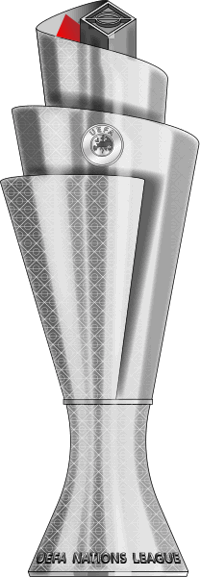
Almost since the moment that international football was invented, there have been complaints about the way that the preparatory games for tournaments like the World Cup and European Championships interfered with the domestic football calendar.
Rather than confront those complaints in any meaningful manner, UEFA decided to come up with a third tournament that has been given the moniker of the UEFA Nations League. It is not a tournament in the same way as the other two are, instead essentially being just a more organised way of playing international friendlies – although it does offer an alternative route to Euro and World Cup qualification, as Scotland found out to their benefit in 2020 and Wales in 2022.
In this article we’ll tell you how the UEFA Nations League came about, including the moment that it was first revealed that a third international tournament was being considered by the governing body of European football. We’ll tell you how teams qualify for it, how it works and any other information that we think is readily available. Of course we will as always tell you all about the major stadiums involved and all the fixtures along the way.
The first three editions of the Nations League have generally been a success. Portugal won the first ever event in their home country in 2019. The second edition of the tournament took place in 2020/2021 with France the overall victors as Italy hosted. In the most recent tournament in 2022/2023 it was Spain who came out on top with the Netherlands as hosts.
The fourth edition of the tournament runs from 2024-2025. The league phase will be held in September & November 2024 (6 matchdays) with the finals due to be held from in June 2025. For this tournament, however, there is a new quarter-final stage to be held in March 2025 between the winners and runner-up in League A groups. This will be played alongside a new promotion/relegation play-off tournament for all leagues. You can read about those format changes further down.
Note that UEFA made the decision to suspend Russia from the 22/23 and 24/25 tournament, they have automatically been relegated to league C for the next tournament and will likely end up relegated again to League D for 2026/2027.
UEFA Nations League Stadiums
| Stadium | Year Opened | Capacity | Ave Attendance | Record Attendance | Record Attendance Match |
|---|---|---|---|---|---|
|
Allianz Arena
Bayern Munich |
2005 | 75000 | 71000 | 75000 | B Munich v Schalke 04 (2015) |
|
Arena Națională
Steaua București / Romania |
2011 | 55634 | 21099 | 53329 | Romania v Netherlands (2012) |
|
Atatürk Olympic Stadium
Turkey |
2002 | 76761 | 64831 | 79414 | Galatasaray v Olympiacos (2002) |
|
Aviva Stadium
Ireland |
2010 | 51700 | 34122 | 51700 | Multiple |
|
Baku National Stadium
Azerbaijan / Qarabag |
2015 | 69870 | 38000 | 55000 | Azerbaijan v Norway (2016) |
|
Borussia-Park
Borussia Mönchengladbach |
2004 | 54057 | 51715 | 54010 | |
|
Cardiff City Stadium
Cardiff City / Wales |
2009 | 33280 | 19455 | 33280 | Wales v Belgium (2015) |
|
De Kuip
Feyenoord |
1937 | 51177 | 47500 | 65427 | Feyenoord v Twente (1968) |
|
Estadio Jose Alvalade
Sporting CP |
2003 | 50095 | 39988 | 49699 | Sporting CP v Benfica (2016) |
|
Fisht Olympic Stadium
|
2013 | 47659 | 30472 | 37923 | Germany v Mexico (2017) |
|
Friends Arena
Sweden / AIK Fotboll |
2012 | 54329 | 21000 | 49967 | Sweden v England (2012) |
|
Georgios Karaiskakis
Olympiacos, Greece National Team |
2004 | 32115 | 23248 | 42415 | Olympiacos vs AEK Athens (1965) |
|
Hampden Park
Scotland / Queen's Park |
1903 | 51866 | 50597 | 149547 | Scotland v England (1937) |
|
Johan Cruyff Arena
AFC Ajax / Netherlands |
1996 | 55000 | 50905 | 53502 | |
|
Juventus Stadium
Juventus |
2011 | 41507 | 39489 | 41470 | Juventus v Roma (Dec 2016) |
|
Kaliningrad Stadium
FC Baltika Kaliningrad |
2017 | 35212 | 33062 | 33973 | Spain v Morocco (2018) |
|
Molineux
Wolverhampton Wanderers |
1889 | 31750 | 31153 | 61315 | Wolves v Liverpool (1939) |
|
Parken Stadium
FC Copenhagen / Denmark |
1992 | 38065 | 14523 | 42083 | Denmark v Sweden (2007) |
|
Puskás Arena
Hungary |
2019 | 67215 | 55010 | 65114 | Hungary v Uruguay (2019) |
|
Rajko Mitić Stadium
Red Star Belgrade (FK Crvena zvezda) & Serbia National Team |
1963 | 53000 | 13566 | 110000 | Red Star v Ferencváros (23/04/1975) |
|
Red Bull Arena (Leipzig)
RB Leipzig |
2004 | 47069 | 41385 | 43348 | RB Leipzig v VfL Wolfsburg (2015) |
|
San Siro
AC Milan & Inter Milan |
1926 | 80018 | 48358 | 83381 | Inter Milan v Schalke (1997) |
|
Sinobo Stadium
Slavia Prague & Czech Republic |
2008 | 20800 | 13511 | 19370 | Slavia Prague v Sparta Prague (14/04/2019) |
|
Stade De France
France |
1998 | 81338 | 78432 | 80832 | Guingamp v Rennes (2009) |
|
Stadion Maksimir
Dinamo Zagreb / Croatia |
1912 | 35123 | 3875 | 64138 | NK Zagreb v NK Osijek (1973) |
|
The Principality Stadium
Wales |
1999 | 74500 | 38854 | 74645 | Wales v Ireland (2009) |
|
Wembley
England |
2007 | 90000 | 85000 | 89874 | Portsmouth v Cardiff City (2008) |
|
Windsor Park
Northern Ireland |
1905 | 18434 | 17811 | 58420 | Northern Ireland v England (1956) |
Group Stages
League A
| Country | 2023 Rank | Group | Group Position | W-D-L | Points |
|---|---|---|---|---|---|
 Croatia Croatia |
2 | 1 | - | - | - |
 Portugal Portugal |
6 | 1 | - | - | - |
 Poland Poland |
11 | 1 | - | - | - |
 Scotland Scotland |
16 | 1 | - | - | - |
 Italy Italy |
3 | 2 | - | - | - |
 Belgium Belgium |
7 | 2 | - | - | - |
 France France |
12 | 2 | - | - | - |
 Israel Israel |
13 | 2 | - | - | - |
 Netherlands Netherlands |
4 | 3 | - | - | - |
 Hungary Hungary |
8 | 3 | - | - | - |
 Germany Germany |
10 | 3 | - | - | - |
 Bos & Herz Bos & Herz |
14 | 3 | - | - | - |
 Spain Spain |
1 | 4 | - | - | - |
 Denmark Denmark |
5 | 4 | - | - | - |
 Switzerland Switzerland |
9 | 4 | - | - | - |
 Serbia Serbia |
15 | 4 | - | - | - |
League B
| Country | 2023 Rank | Group | Group Position | W-D-L | Points |
|---|---|---|---|---|---|
 Czech Rep Czech Rep |
18 | 1 | - | - | - |
 Ukraine Ukraine |
22 | 1 | - | - | - |
 Albania Albania |
27 | 1 | - | - | - |
 Georgia Georgia |
29 | 1 | - | - | - |
 England England |
19 | 2 | - | - | - |
 Finland Finland |
21 | 2 | - | - | - |
 Ireland Ireland |
26 | 2 | - | - | - |
 Greece Greece |
30 | 2 | - | - | - |
 Austria Austria |
17 | 3 | - | - | - |
 Norway Norway |
24 | 3 | - | - | - |
 Slovenia Slovenia |
25 | 3 | - | - | - |
 Khazakhstan Khazakhstan |
32 | 3 | - | - | - |
 Wales Wales |
20 | 4 | - | - | - |
 Iceland Iceland |
23 | 4 | - | - | - |
 Montenegro Montenegro |
28 | 4 | - | - | - |
 Turkey Turkey |
31 | 4 | - | - | - |
League C
| Country | 2023 Rank | Group | Group Position | W-D-L | Points |
|---|---|---|---|---|---|
 Sweden Sweden |
34 | 1 | - | - | - |
 Azerbaijan Azerbaijan |
37 | 1 | - | - | - |
 Slovakia Slovakia |
42 | 1 | - | - | - |
 Estonia Estonia |
47 | 1 | - | - | - |
 Romania Romania |
33 | 2 | - | - | - |
 Kosovo Kosovo |
38 | 2 | - | - | - |
 Cyprus Cyprus |
44 | 2 | - | - | - |
 Lithuania Lithuania |
46 | 2 | - | - | - |
 Luxembourg Luxembourg |
36 | 3 | - | - | - |
 Bulgaria Bulgaria |
39 | 3 | - | - | - |
 N. Ireland N. Ireland |
43 | 3 | - | - | - |
 Belarus Belarus |
45 | 3 | - | - | - |
 Armenia Armenia |
35 | 4 | - | - | - |
 Faroe Is Faroe Is |
40 | 4 | - | - | - |
 Macedonia Macedonia |
41 | 4 | - | - | - |
 Latvia Latvia |
48 | 4 | - | - | - |
League D
| Country | 2023 Rank | Group | Group Position | W-D-L | Points |
|---|---|---|---|---|---|
 Gibraltar Gibraltar |
47 | 1 | - | - | - |
 San Marino San Marino |
53 | 1 | - | - | - |
 Liech'stein Liech'stein |
54 | 1 | - | - | - |
 Moldova Moldova |
50 | 2 | - | - | - |
 Malta Malta |
51 | 2 | - | - | - |
 Andorra Andorra |
52 | 2 | - | - | - |
Note: Russia are currently banned from the Nations League. League D in the past had 7 teams now it has 6 until Russia is reinstated.
Tournament Format
Qualification
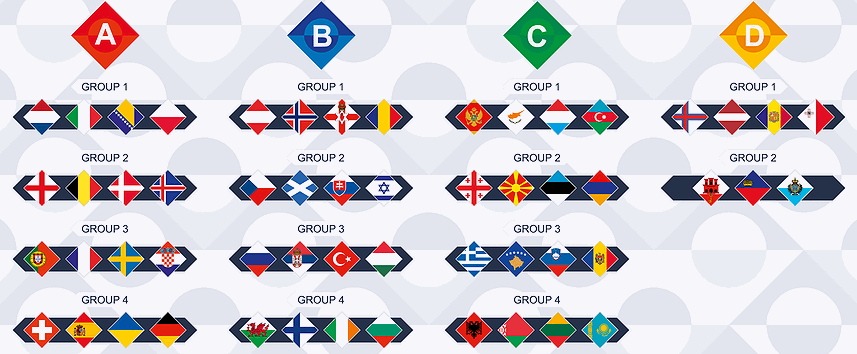
The short answer to the question of qualification for the tournament is that there is no need to qualify as such. After all, the hope is that this competition will replace the friendlies that are currently played according to FIFA’s International Match Calendar.
As such, all fifty-five national teams from UEFA’s associate members will be eligible to take part.
One thing that is worth noting is that the tournament will be linked to qualifying for the UEFA European Championships and World Cup. That means that teams that don’t quality for the Euros or World Cup via traditional means will have the chance to do so via the UEFA Nations League. That’s not something that’s been met with universal approval, however.
It’s felt that it will allow weaker teams to qualify who might not otherwise be able to do so, thereby cheapening the quality of both competitions.
The Group Stages
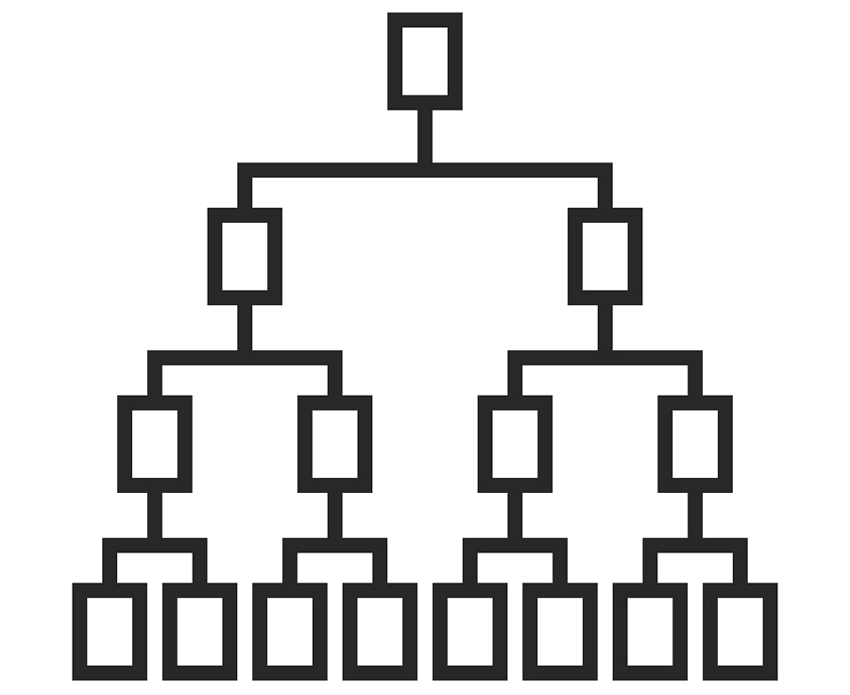 The competition sees the fifty-five national sides that are part of UEFA split into four different Leagues. The format changed after the inaugural competition, initially leagues A & B had 12 teams with 4 groups of 3, League C had 15 teams with groups of 3 or 4 and League D had 16 teams with four groups of 4. The idea was the winners of League A groups would go to the finals and winners of other League groups would be promoted, group losers would be relegated. In the aftermath of the tournament however UEFA decided to scrap relegation that time around and teams were only promoted. This increased the size of the Leagues A-C and decreases the size of League D.
The competition sees the fifty-five national sides that are part of UEFA split into four different Leagues. The format changed after the inaugural competition, initially leagues A & B had 12 teams with 4 groups of 3, League C had 15 teams with groups of 3 or 4 and League D had 16 teams with four groups of 4. The idea was the winners of League A groups would go to the finals and winners of other League groups would be promoted, group losers would be relegated. In the aftermath of the tournament however UEFA decided to scrap relegation that time around and teams were only promoted. This increased the size of the Leagues A-C and decreases the size of League D.
League A is the top-seeded division and features sixteen teams, which is the same number as play in League B and League C. League D now has six sides in it. Those Leagues are then be split into four groups (2 groups for League D), with four teams in each group with the exception of League D groups that have 3 teams in each. Each team in a group plays each other home and away. League D previously had 7 teams but with Russia currently not allowed to take part it remains at 6 for the time being.
The effect of these changes results in an increase in the overall number of Nations League group matches from 138 to 168, whether that was called for or not in another thing as we know UEFA’s favourite thing to do is keep expanding competitions.
Quarter-Finals and Promotion / Relegation Play-Offs
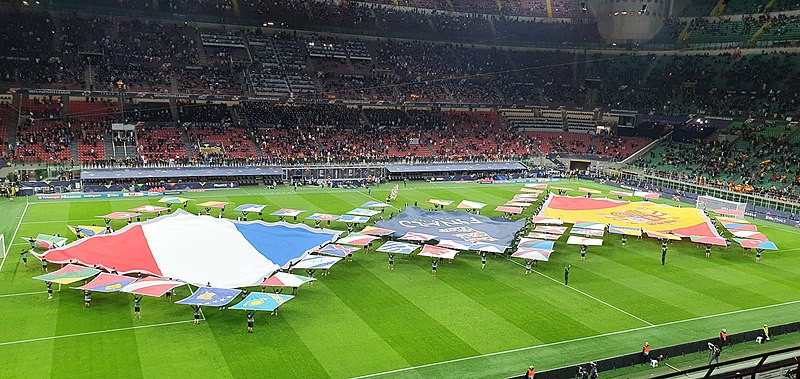
For 2024/25 the format changed again. Now the four teams that win the League A groups do not progress directly to the semi-finals the following June. Instead the group winners play the group runners-up in a two-legged home and away quarter-final the following March. The group winners playing the second legs at home. This will define the four team that progress to the finals proper.
The teams that win the groups in League B, C & D will still be automatically promoted and the teams at the bottom of the groups in Leagues A and B will still be automatically relegated (as England were in 2023). As League D only has two groups only the worst two teams from League C are automatically relegated – this is changed from the 2022/23 edition where ‘play-outs’ were held to decide if teams were relegated or not.
The new promotion / relegation tournament in March will see third placed teams from League A & B play group runners-up from Leagues B & C in a two-legged play-off, as with the Quarter-Finals. The winner of that match either being promoted (if runners-up) or staying in the league (if third-placed).
The result of this is a further increase in the total number of matches now played in the tournament. Will UEFA ever stop adding more matches?
The Nations League Finals
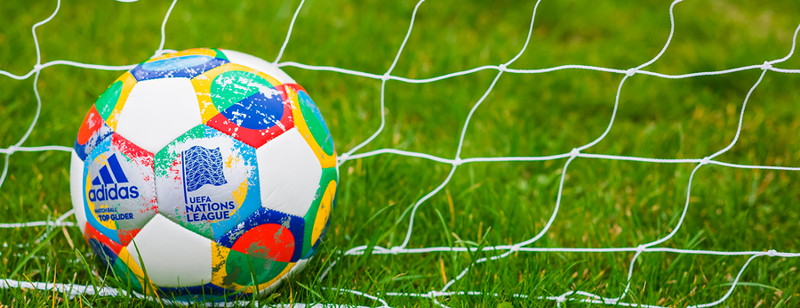 Never an organisation to shy away from complicating things unnecessarily, UEFA have then decided to allow the winners of quarter-finals to compete against other to become the UEFA Nations League Champion.
Never an organisation to shy away from complicating things unnecessarily, UEFA have then decided to allow the winners of quarter-finals to compete against other to become the UEFA Nations League Champion.
They’ll play in two semi-finals and then a final in order to determine this in June the following year. A play-off is held for third place.
The host for the finals is chosen from among the four semi-finalists. For the inaugural tournament in 2018-19 Portugal was chosen as host nation, for 2021 Italy were chosen as group A1 winners in each instance.
In 2022/23 all nations in group A4 expressed an interest in hosting and as it was The Netherlands that made it to the finals they hosted.
Prize Money
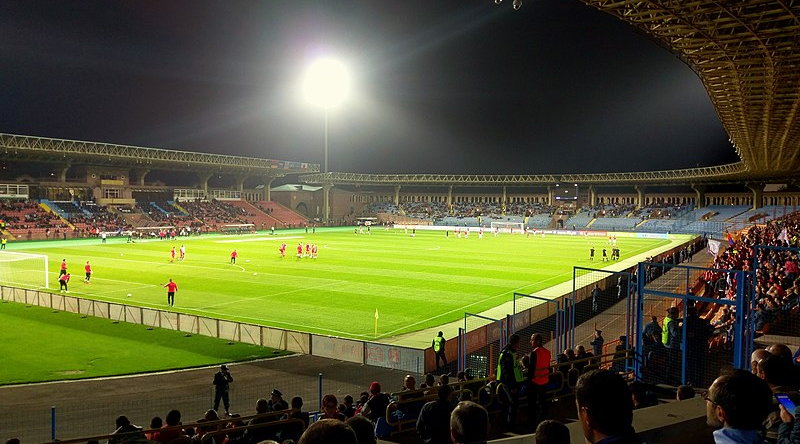
Teams receive a base fee for taking part, this is €2.25M for league A, €1.5M league B, €1.25M league C and €0.75M league D. Each group winner then receives an additional bonus equal to the league fee.
The winner of the Nations League finals will receive a trophy and €6.0 million in prize money, the runner up gets €4.5M. There is also a third place play-off with 3rd placed team pocketing €3.5M and fourth place €2.5M. This is in addition to group winner and base fees.
Winners Portugal took home €10.5M in 2019, France took €11M in 2021 and Spain bagged €12M in 2023. The total prize money budget in 2023 was €76.25M
World Cup and Euro Qualification
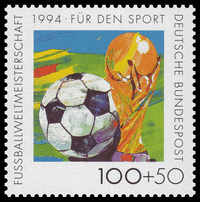
One of the biggest draws for smaller European teams playing in the Nations League, other than the fact they will play more equal opposition, is the ability for some teams to earn Euro and World Cup qualifying spots.
For the 2020 Euros 20 of the 24 spots were determined through the main qualification process. The remaining 4 places became available through a Nations League play-off. For 2024 that was reduced to 3 places due to Germany qualifying as hosts automatically and 20 places being available through the conventional Euros qualifying.
There are play-offs for each league A-D (or A-C if there are only 3 places), each group winner automatically gains a spot, if those teams have already qualified for the Euros through the main path then that place will be given to the next ranked team, and so on. If less than four teams in a league remain unqualified then the play-off spots drop to the next league. This could most likely happen for League A, with extra places dropping to League B.
Once 16 unqualified teams (or 12 teams if only 3 places available) have been selected into four groups there will then be a play-off the following spring. Each group winner will gain one of the four/three remaining European Championship spots.
In 2020 Scotland, North Macedonia, Slovakia and Hungary qualified via this route.
A similar process took place for European qualification to the World Cup 2022 in Qatar. This time only 3 extra spots were available, however. The two best Nations League teams that have not already qualified joined the 10 world cup group runners up in a play-off. The 12 teams were split into three paths playing a semi-final and final for each path. This resulted in Wales, Poland and Portugal qualifying for Qatar.
The 2026 World Cup expanded to 48 teams meaning UEFA now gets 16 spots in the finals. Twelve of those berths are taken up by the group winners from the World Cup qualification groups. The 12 runners-up join the four best teams from the Nations League (that have not already won or finished second in a World Cup qualification group) in a play-off round for the remaining four spots.
Those 16 teams are divided into four play-off paths that consist of semi-finals and a final. The four winners in the four paths will join the other 12 at the World Cup.
Previous Winners
| Year | Host | Final | Result | Stadium | ||
|---|---|---|---|---|---|---|
| 2024-25 | ? |  | v |  | ? | TBD |
| 2022-23 | Netherlands |  Croatia Croatia | v |  Spain Spain | 0-0 AET (4-5 PS) | De Kuip |
| 2020-21 | Italy |  France France | v |  Spain Spain | 2-1 | San Siro |
| 2018-19 | Portugal |  Portugal Portugal | v |  Switzerland Switzerland | 1-0 | Estádio do Dragão |
KEY: AET - After Extra Time, PS - Penalty Shoot Out
Home Nation Results
Finals
| Country | Apps | Games | Wins | Draws | Loses | Highest | Goals F | Goals A | Hosted |
|---|---|---|---|---|---|---|---|---|---|
 England England | 1 | 2 | 1 | 0 | 1 | 3rd Place | 1 | 3 | 0 |
 Wales Wales | - | - | - | - | - | - | - | - | - |
 Scotland Scotland | - | - | - | - | - | - | - | - | - |
 N. Ireland N. Ireland | - | - | - | - | - | - | - | - | - |
League Phase
| Country | Games | Wins | Draws | Loses | F | A | Group Wins | Relegated | Highest League |
|---|---|---|---|---|---|---|---|---|---|
 England England | 16 | 5 | 5 | 6 | 17 | 19 | 1 | 1 | A |
 Wales Wales | 16 | 7 | 2 | 7 | 25 | 17 | 1 | 1 | A |
 Scotland Scotland | 16 | 10 | 2 | 4 | 26 | 13 | 2 | 0 | A |
 N. Ireland N. Ireland | 16 | 1 | 4 | 11 | 13 | 28 | 0 | 1 | B |
UEFA Nations League Stats
| Tournament Stats | |
|---|---|
| First Year | 2018-19 |
| Number of Teams | 55 |
| Number of Finalists | 8 |
| Number of Leagues | 4 (A, B, C & D) |
| Number of Groups | 14 (4 league A-C, 2 league D) |
| Most Goals | 423 (2022/23) |
| Least Goals | 342 (2018/19) |
| Highest Goals / Game | 2.64 (2022/23) |
| Base Fee League A Team | €2,250,000 |
| Base Fee League B Team | €1,500,000 |
| Base Fee League C Team | €1,125,000 |
| Base Fee League D Team | €750,000 |
| Prize Money League A Group Winner | €2,250,000 |
| Prize Money League B Group Winner | €1,500,000 |
| Prize Money League C Group Winner | €1,125,000 |
| Prize Money League D Group Winner | €750,000 |
| Prize Money Finals 4th Place | €2,500,000 |
| Prize Money Finals 3rd Place | €3,500,000 |
| Prize Money Finals Runner-Up | €4,500,000 |
| Prize Money Finals Winner | €6,000,000 |
| Highest Attendance | 3,219,559 (2022/23) |
| Lowest Attendance | 222,505 (2020/21) |
| Team / Country Stats | |
|---|---|
| Most Final Wins | 1 (Portugal, France, Spain) |
| Most Final Appearances | 2 (Spain) |
| Consecutive Winners | TBD |
| Player Stats | |
|---|---|
| Top Scorer (Single Tournament) | Aleksandar Mitrovic (6 - Serbia 2019 & 2023), Erling Haaland (6 - Norway 2021 & 2023), Ferran Torres (6 - Spain 2021) |
| Top Scorer (League Phase) | 6 - Multiple |
| Top Scorer (Final Phase) | Christiano Ronaldo (3 - Portugal 2019) |
| Top Scorer (All Time) | Aleksandar Mitrovic (14 - Serbia) |
| Most Medals | 1 (Multiple) |
About the UEFA Nations League
How It Got Started
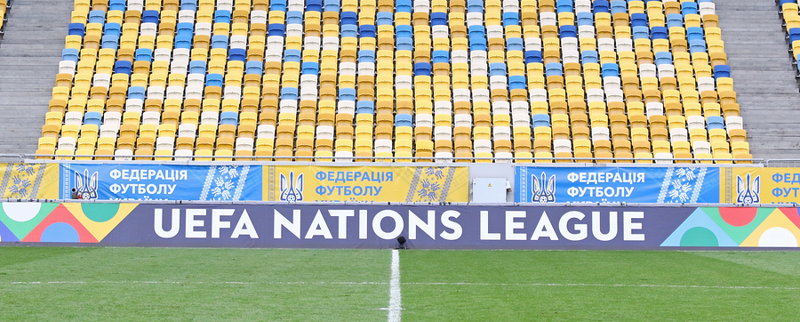
The first real murmurs about the idea of a UEFA Nations League came about in 2013 when the President of the Norwegian Football Association, Yngve Hallén, confirmed that talks had been ongoing.
He stressed that it was only at the design stage of proceedings at that point, with subsequent information revealing that conversations actually began as long ago as 2011 during the UEFA Strategy Meeting that took place in Cyprus.
More conversations took place over the following years, with the organisation eventually adopting the new tournament at the XXXVIII Ordinary UEFA Congress that was held in Astana on the 27th of March 2014.
What People Have Said About It
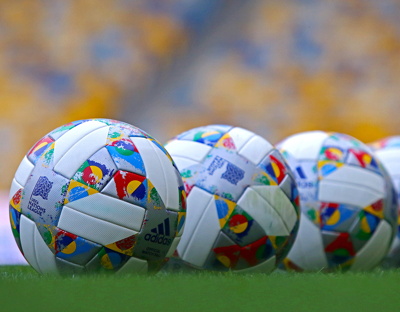 After the tournament was officially adopted by UEFA in unanimous fashion, the General Secretary of the organisation, Gianni Infantino, said that he hoped that it would allow smaller, less glamorous nations to play games against those that are considering amongst the biggest and best in world football.
After the tournament was officially adopted by UEFA in unanimous fashion, the General Secretary of the organisation, Gianni Infantino, said that he hoped that it would allow smaller, less glamorous nations to play games against those that are considering amongst the biggest and best in world football.
Greg Dyke, the Chairman of the Football Association at the time, agreed, declaring that it was a ‘very attractive’ way of organising international football.
The General Secretary of the Royal Belgian Football Association, Steven Martens, was thinking about the money, declaring that even the smallest of sides would benefit as the television money would be centralised.
Most supporters, meanwhile, didn’t realise anything had changed.
The Trophy
 The UEFA President, Aleksander Čeferin, revealed the design of the competition’s trophy to the world’s press ahead of the draw for the 2018-2019 tournament. It was inspired by the logo for the event itself, which is the first time that’s happened in a UEFA tournament.
The UEFA President, Aleksander Čeferin, revealed the design of the competition’s trophy to the world’s press ahead of the draw for the 2018-2019 tournament. It was inspired by the logo for the event itself, which is the first time that’s happened in a UEFA tournament.
It features a flag, representing the fifty-five nations that will compete, wrapped around a flag pole. The entire thing is made of sterling silver, with the interesting touch of competition’s colours being found on the inside of the design. Those colours can then be seen reflected off the silver as the trophy is moved around.
The trophy was designed by a creative design agency called Young & Rubicam, of whom Hélder Pombinho is the Creative Director. It weight seven and a half kilograms and stands at seventy-one centimetres tall, with the aim being that the winning captain of the tournament’s victorious side will lift it aloft as though hosting up the flags of all nations to the pinnacle of the sport.
Essentially, exactly the sort of nonsense that you’d expect from a creative design agency.
The Anthem
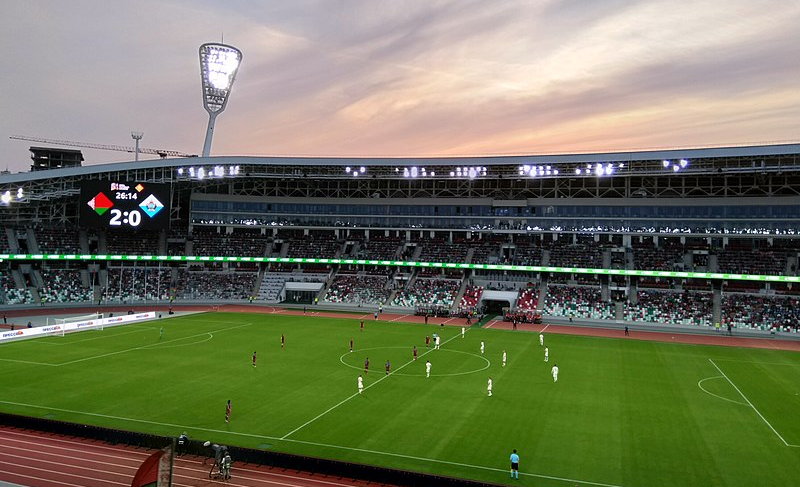
UEFA never miss out on an opportunity to come up with some music if they get the chance, so of course the UEFA Nations League is no exception.
It’s a bespoke composition that was recorded by a philharmonic orchestra, complete with a Latin singing choir.
It’s not all fuddy-duddy and old-fashioned, however.
The more classical aspect of the tune are mixed in with electronic music to create either something contemporary and fresh, or else something that no one will enjoy listening to at any point.
It will be used on television adverts for the tournament, when players enter the field of play and during trophy ceremonies.
When Does It Take Place
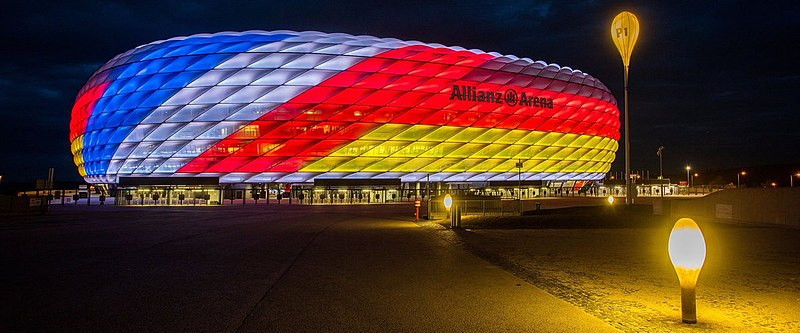
That means that the group games will come hot on the heels of both major international tournaments, beginning not long after the domestic league seasons have got back underway.
The Nations League Finals of League A, meanwhile, will take place in March and June of odd-numbered years, resulting in a UEFA Nations League champion being crowned every two years in between the World Cup and European Championships.
Well that is the plan anyway, although in 2020 the suspension of the Euros to 2021 due to corona virus pushed the Nations League finals back to October.
Previous Tournaments
UEFA Nations League 2022-23
England were relegated to League B as they finished bottom of group A3, although they were not the only big team to do badly this time around. Scotland, however, won group B1 to leap-frog England and take their place in League A for the 2024-25 tournament. Nations in group A4 all expressed interest in hosting so it was the A4 winner Netherlands who hosted the finals, joined by Croatia, Italy and Spain. Croatia blew the Netherlands away 4-2 in the semi-final while Spain beat Italy 2-1. The final was a drab 0-0 but Spain eventually won on penalties 5-4 to claim their first Nations League.
UEFA Nations League 2020-21
The second Nations League was even more of a success than the first, especially the finals played in Italy that saw 13 goals in 4 games before France were crowned the winners. The finals were played later in October due to Euro 2020 being rescheduled to 2021 and this was to the advantage of the NL with players fresher and with cooler temperatures allowing faster games. Italy were hosts but lost a 37 match unbeaten run losing 2-1 to Spain in the semi-final while France dramatically overcame Belgium 3-2 despite being 2-0 down at half-time. France won the final 2-1 against Spain, again coming from behind, to win at the San Siro.
UEFA Nations League 2018-19
The first ever Nations League was initially met with skepticism as another UEFA vanity project, however many nations and fans were pleasantly surprised at how much better the level of football was compared to international friendlies. Portugal, Netherlands, England and Switzerland each won their League A groups for a place in the inaugural finals in June 2019. The first trophy was won by hosts Portugal.
